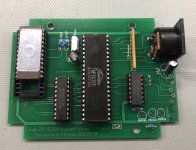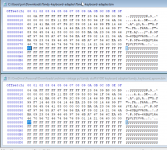I am on a side mission to recreate the Tandy 25-1030 Enhanced Keyboard Adapter for the Tandy 1000/A/HD/SX/TX computers. I borrowed such an adapter, stripped it down, scanned it, and duplicated the layout in Sprint Layout yesterday. I am just putting the final touches on it now, and I will send it off for initial prototype fabrication later today. I also have an image of the ROM which has been written to a new ROM and works perfectly in the original board, so I know it is a good read.
The design is extremely simple, and there is a LOT of wasted space. Once I know for sure that the board does function properly, I will re-do the job in KiCAD with schematics and a new layout. I will make it all open source and post it on my git when I am sure there are no errors.

The design is extremely simple, and there is a LOT of wasted space. Once I know for sure that the board does function properly, I will re-do the job in KiCAD with schematics and a new layout. I will make it all open source and post it on my git when I am sure there are no errors.



